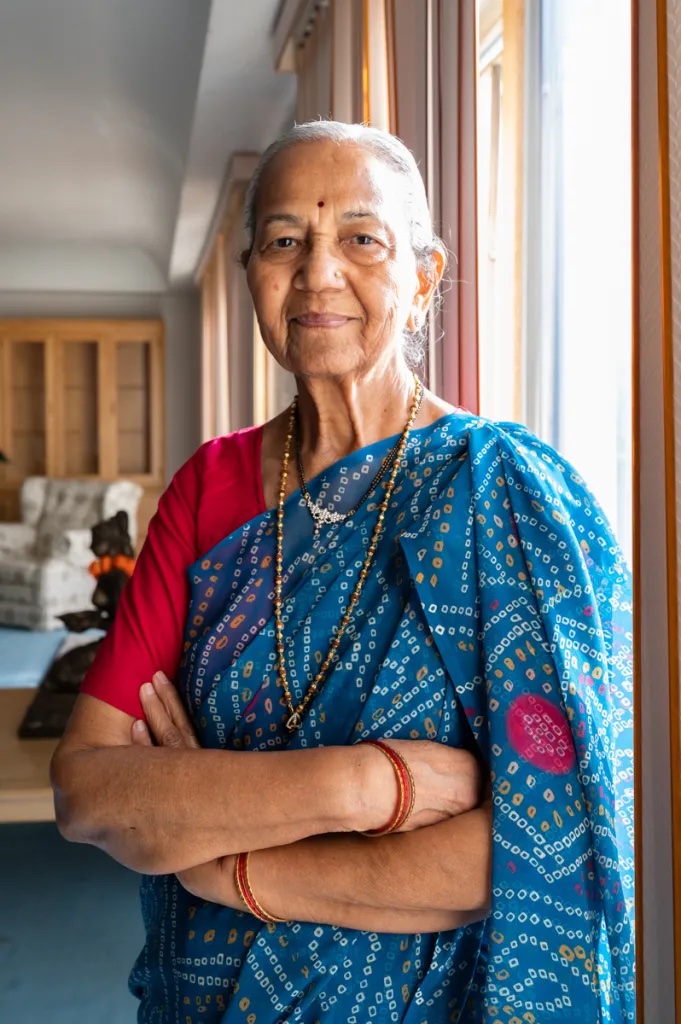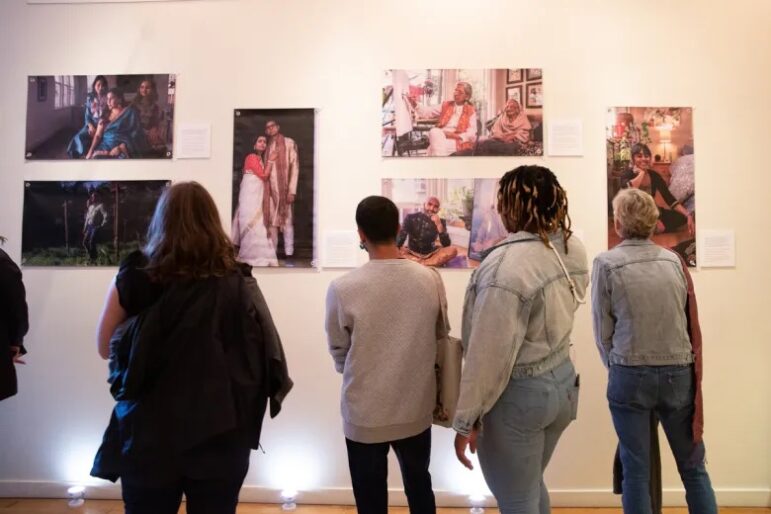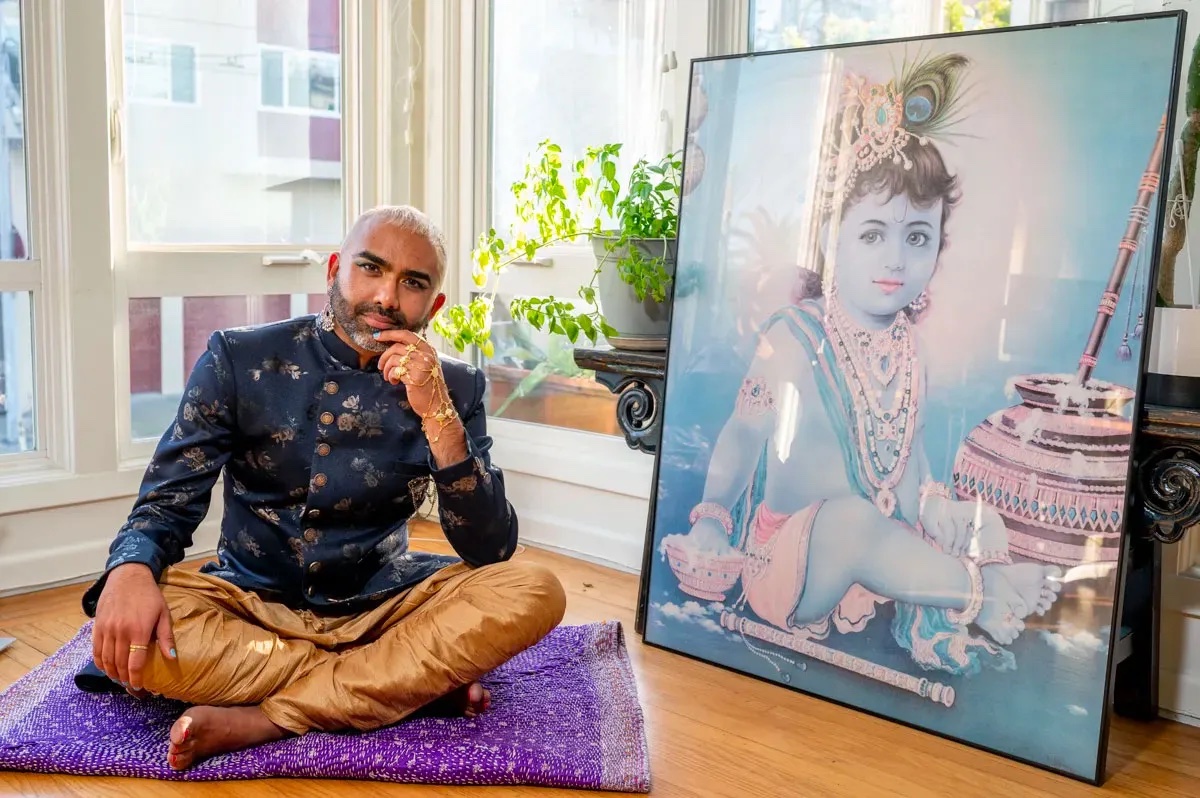“The essential dilemma of my life is between my deep desire to belong and my suspicion of belonging.” These words by Pulitzer Prize-winning Bengali American author, Jhumpa Lahiri, capture the nebulous emotions Indians and other South Asians negotiate on a daily basis as they go about their lives in America.
It is this cultural dilemma that India Currents CatchLight Local Fellow, photojournalist Sree Sripathy, has attempted to capture through her photographs, now on display at the ODC Theater in San Francisco. Titled “We Belong,” this is a part of her CatchLight Local fellowship project. The exhibition is supported by India Currents and the Chitresh Das Institute, and will run through Oct. 2.
The collection of 13 photographs is a “small glimpse into how Indians or South Asians connect to their culture,” says Sree. In the photos, we see a mix of immigrants and born-and-raised Indian Americans from different religions, regions, ages, and genders.

Most of those who responded to Sree’s call for this project were of Indian origin. “That was part of the challenge,” said Sree, who would’ve liked to capture more stories from the South Asian diaspora, including countries like Bangladesh, Nepal, and Sri Lanka. “Building those connections takes time,” she added.
Discovering new cultural stories
When Sree covers events and photographs people for stories, she tries to blend in and capture moments as they occur naturally. This series of photographs is different. “I talked to each participant about how they wanted to represent themselves visually. It was a collaboration,” she said.
The photos are best described as portraits or moments. “Some moments are more structured than others, but I wouldn’t say they posed for me. Though the process was very deliberate and intentional, these aren’t poses,” Sree explained.

But there was room for improvisation. A few times, when she reached the subject’s home and noticed the presence of family members like their children or parents, she spoke to them and involved them in the project. “I found out delightful things about the history of these families,” said Sree. Like in the case of 84-year-old Mrs. Vijayalaxmi C. Oza, the mother of one of her subjects, Raj Oza. “I saw Aunty there and asked her if she would participate. Her story of immigration, of how she supported her family and raised her children, is incredible!”

‘In America, our culture is in little boxes’
Sree was born and raised in the U.S., by parents who came from South India in the 1970s. “When I was growing up, the Indian community here wasn’t as large as it is now. There was no Indian store, there was no sari palace. When Amma wanted to make sevai, we’d buy rice noodles from the Asian store — at the time we called it the Chinese store,” she recalled.
The way Sree connected with her heritage kept changing with time. “As the child of immigrants, I’m constantly negotiating my Indian-ness, my American-ness, my California-ness — all the different identities that I hold,” Sree said, talking about the way her own life experience led to this project.
In India, our culture is everywhere; here, the culture is “in little boxes,” she observed.
“If you’re born and raised in India, you’re Indian in ways you may not even realize. You might be American now but there’s an Indian part of you that will always remain because that’s just the way you’re raised. There’s a part of you that will always belong to that. You can’t re-create that necessarily,” she said.

Staking claim to what’s ours
While the meaning of the exhibition’s name, “We Belong,” is straightforward, it does lend itself to interpretations.
To Sree, it’s about belonging to multiple places and identities — to the United States, to one’s home country, to one’s ancestry and ethnicity, and also to oneself.
Says Vandana Kumar, founder and publisher of India Currents, “The identity question has dodged us for decades. ‘We Belong’ is a visual storytelling feature that documents our complex socio-cultural dance. The photos showcase our diverse community and the way in which we interact with our culture. The question of who we really are is bandied around a lot, especially during election season. In America, especially in the valley, Indians are viewed through a single lens. But we’re so much more than, say, just techies, for instance. This exhibition is a very deliberate attempt to claim our space here. It’s about the power of community.”

Celine Schein Das, executive director of Chitresh Das Institute, said, “To me, ‘We Belong’ means cultural contributions are valued and recognized — that not only is one given a place, but one’s contributions shape that place and adjust the habits and thinking because they make room for different ways of seeing, doing, understanding, and being.”
Das worked alongside her late husband, Kathak artist and guru Pandit Chitresh Das, for over 20 years. “As a white woman, I’ve had much of the media and art in the world catered to my cultural understanding. Because I was working with him (Chitresh Das), I saw how the mainstream media treated his work. People with power in the arts, the media, funders, presenters of performances, viewed Indian classical dance so narrowly. They had little, if any, cultural references or context, and very few sought to know more in order to better understand his work.”
For example, when a newspaper reviews a ballet adaptation of“Romeoand Juliet,” there exists a basis for understanding it. But there was no reference point for critics reviewing her late husband’s innovative approach when he told the story of Bali and Sugreev from the “Ramayana.”
Sree Sripathy’s work, Das said, will give voice to many. “Anyone who sees her work will gain a new understanding; it shifts, in big and small ways, the sense of who belongs.”
The project is currently on exhibition at the ODC Theater now until Oct. 2, 2023. Entrance is through Robin’s Cafe on 3153 17th Street, San Francisco. Open hours are 8 a.m. to 4 p.m. Monday through Friday, and 8 a.m. to 2 p.m. Saturday and Sunday.
This story originally appeared in India Currents and was produced in collaboration with CatchLight as part of the CatchLight Local CA Visual Desk, in part with funding provided by the State of California, administered by the California State Library in partnership with the California Department of Social Services and the California Commission on Asian and Pacific Islander American Affairs as part of the Stop the Hate program.“
